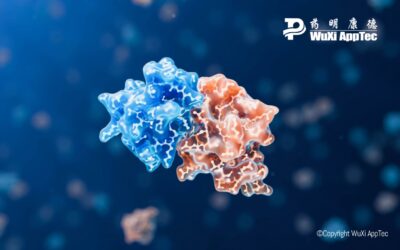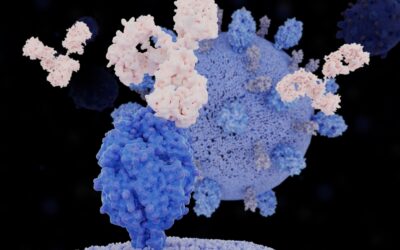Critical reagents are an essential part of bioanalytical testing for large molecule preclinical and clinical studies. These essential components help determine the accuracy of the analyte, precision and performance of ligand binding assays (LBAs), which are key to measuring the efficacy of compounds and providing insights into proper dosing. This means researchers need to carefully characterize and document critical reagents early in a suitable formulation with demonstrated stability.
A Closer Look At Critical Reagents
According to the International Council for Harmonisation of Technical Requirements for Pharmaceuticals for Human Use (ICH) M10 draft guidance, also known as ICH M10, “Critical reagents bind the analyte and, upon interaction, lead to an instrument signal corresponding to the analyte concentration.” Critical reagents can refer to a variety of compounds, including:
- antibodies
- peptides
- engineered proteins
- complex biologics
- solid supports
- matrices
- antibody, protein, and peptide conjugates
These compounds are integral to the overall performance of an LBA. Ensuring critical reagent quality and consistency is very important, but they also come with unique challenges.
Challenges Associated With Critical Reagents
The first factor that makes critical reagents challenging to produce and manage is that they are natural biological compounds. That makes them immensely susceptible to variability. “Variability” refers to compounds naturally changing or morphing, which undermines control group validity in a study. Without the consistency a control provides, assay results cannot be fully validated and may be inaccurate.
To mitigate variability issues, researchers must monitor critical reagents’ stability to ensure quality and accurate characterization. If the reagent is out of stock or outside the re-test date, scientists should determine if the changes are minor or major to the assay. The current ICH M10 draft guidance explains that major lot changes will significantly impact the assay, whereas minor changes are those that don’t impact performance as drastically.
Regulatory requirements are the second challenge that developers need to consider when dealing with critical reagents. For example, ICH M10 underscores the importance of critical reagents by pointing out that they directly impact assay results—alongside binding agents like binding proteins, aptamers, antibodies and conjugated antibodies.
The U.S. Food and Drug Administration (FDA) and the American Association of Pharmaceutical Scientists (AAPS) also provide helpful recommendations for best practices when assessing critical agents. The U.S. FDA Bioanalytical Method Validation (BMV) specifically advises that “assay validation is important when there are changes to the critical reagents, such as lot-to-lot changes or switches to another reagent.” Other factors that may impact assay functionality, such as changes to labeled analytes, detector reagents and antibodies, should trigger specific processes. U.S. FDA BMV guidance requires a developer to evaluate binding and re-optimize assays, verify performance with a standard curve and QCs, and evaluate cross-reactiveness when these changes occur.
The AAPS also details processes for managing critical reagents, including designing the reagent, assigning stability, and altering procedures for minor and major lot changes.
Strategies For Successfully Managing Critical Reagents
Given the challenges associated with critical reagents, organizations need to adopt productive and efficient management strategies. Chief among these is prioritizing characterization and documentation throughout the process. Researchers must conduct proper validation and bridging testing across lot changes and any substitutions of reagents. It’s also recommended that scientists conduct three distinct runs to document LBA performance and limit any variation.
To ensure proper critical reagent management, developers should consider working with a testing partner that includes a comprehensive bioanalytical laboratory staffed by experienced scientists. When vetting potential partners, ask specifically about their experience characterizing and managing critical reagents. Collaborating with a testing partner can also reduce testing and expertise barriers and ensure your research methods and results are accurate, reliable and compliant.
Questions on critical reagents or bioanalytical testing? Consult with an expert at WuXi AppTec today. Contact us.
As a global company with operations across Asia, Europe, and North America, WuXi AppTec provides a broad portfolio of R&D and manufacturing services that enable the global pharmaceutical and life sciences industry to advance discoveries and deliver groundbreaking treatments to patients. Through its unique business models, WuXi AppTec’s integrated, end-to-end services include chemistry drug CRDMO (Contract Research, Development and Manufacturing Organization), biology discovery, preclinical testing and clinical research services, helping customers improve the productivity of advancing healthcare products through cost-effective and efficient solutions. WuXi AppTec received an AA ESG rating from MSCI for the fourth consecutive year in 2024 and its open-access platform is enabling around 6,000 customers from over 30 countries to improve the health of those in need – and to realize the vision that “every drug can be made and every disease can be treated.”


